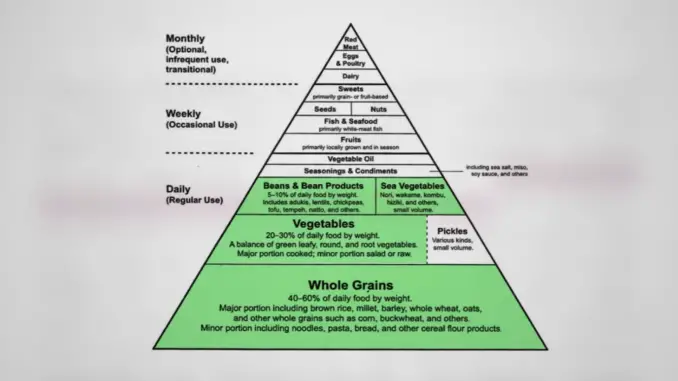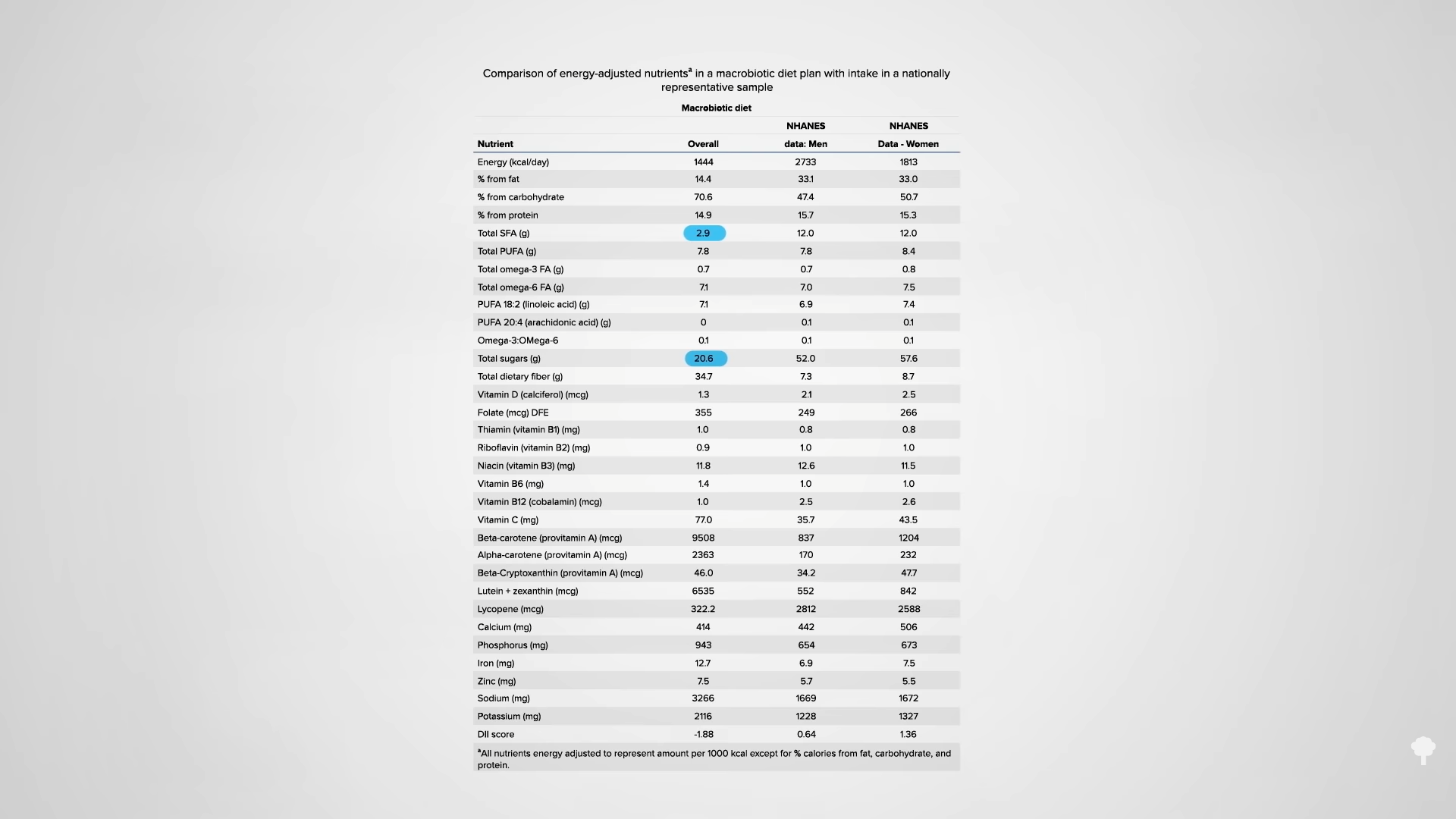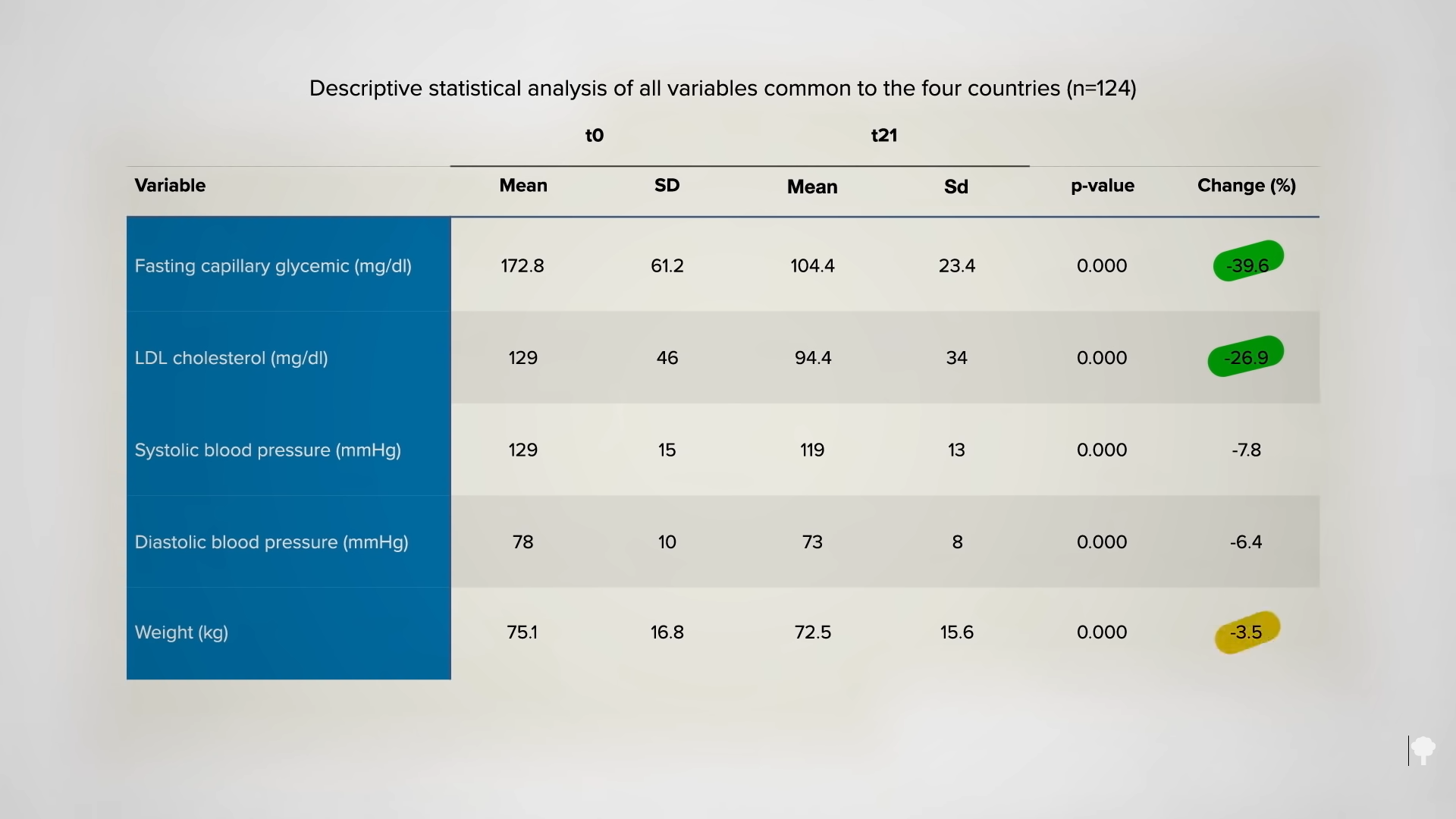
What happens when you put diabetics on a diet composed largely of whole grains, vegetables, and beans?
The American Medical Association has described macrobiotic diets as “one of the most dangerous dietary regimens, posing not only serious hazards to the health of the individual but even to life itself.” Macrobiotic diets “are predominantly vegetarian with great emphasis being placed on the inclusion of whole-grain cereals.” What’s wrong with that? Well, they also used to tell people that “fluids are to be avoided as much as possible,” which isn’t good, and to avoid fruit so much so that it resulted in modern-day cases of scurvy.
Thankfully, as I discuss in my video Flashback Friday: Pros and Cons of a Macrobiotic Diet, “the macrobiotic diet has evolved over the past 30 years.” As you can see below and at 0:46 in my video, the more contemporary version emphasizes whole grains, vegetables, and beans, and minimizes most meat, eggs, and dairy. I don’t like that it restricts fruits and I don’t like all of the added salt, but compared with the standard American diet, it has a lot going for it, as you can see below and at 1:04 in my video: It has only a quarter of the saturated fat intake, less than half of the sugar intake, and a respectable fiber intake—two and a half times the national average. However, it includes more sodium. It also has a negative Dietary Inflammatory Index score, as opposed to the pro-inflammatory typical American diet. Some of the most anti-inflammatory foods are herbs and spices, so instead of adding sea salt and soy sauce, the macrobiotic diet, which is already anti-inflammatory, could be improved by using natural seasonings instead.

Has the macrobiotic diet ever been put to the test? Yes, it has been for diabetes. Higher plain water consumption is associated with lower risk of type 2 diabetes, yet the macrobiotic diet restricts drinking water. Part of the beneficial link may be because people on a macrobiotic diet drink less soda, though. What about the restriction on fruit intake? That probably isn’t helpful either because “higher fruit or green leafy vegetables intake is associated with a significantly reduced risk of type 2 diabetes.” But, green leafy vegetables is where the macrobiotic diet can really shine: It includes a lot of greens. A randomized, double-blind, placebo-controlled, crossover study of kale show that it suppresses the after-meal increase in blood sugars. As you can see in the graph below and at 2:19 in my video, eating a meal of white rice, chicken, and eggs produces a big spike in blood sugar, though it is significantly less when just a tablespoon of dried kale powder is added to the meal, as opposed to a placebo powder.

Macrobiotic diets also include whole grains, which can significantly improve insulin sensitivity compared with refined grains, possibly due in part to all of the wonderful things fiber can do to help our good gut bacteria thrive, potentially lowering inflammation and decreasing diabetes risk, as you can see below and at 2:43 in my video. You don’t know, of course, until you put it to the test.

After only three weeks on a strictly plant-based diet composed mostly of whole grains, vegetables, and beans, participants got about a 10 percent drop in blood pressure, a whopping 35 percent drop in bad LDL cholesterol, and a 38 percent drop in fasting blood sugars. Were these changes statistically significant? Yes, the changes were significant in every possible way.
Similarly, short-term interventional studies of people with diabetes on these so-called Ma-Pi 2 macrobiotic diets have been performed across four continents. “Ma-Pi,” named after the person who came up with the diet, Mario Pianesi, is a strictly plant-based diet of mostly whole grains and vegetables, with legumes, some seeds, and decaffeinated green tea as the preferred beverage. As you can see below and at 3:54 in my video, participants in one of these studies had a nearly 40 percent drop in fasting blood sugars and almost a 27 percent drop in LDL cholesterol in just 21 days. The study subjects did lose weight—a few pounds a week—but those kinds of results were much more than one would expect with weight loss. What’s more, that 40 percent drop in blood sugars was after cutting their insulin in half! So, those numbers greatly underestimate the effects. Better results, on fewer drugs—that’s the power of plants. All we need now is a randomized, controlled clinical trial to really seal the deal, which I cover in my next video, Flashback Friday: Benefits of a Macrobiotic Diet for Diabetes.

These pros and cons remind me of a video I did on Flashback Friday: Improving on the Mediterranean Diet & Do Flexitarians Live Longer?
I’ve got dozens of other videos on preventing and treating diabetes with diet. How Not to Die from Diabetes is a good place to start.